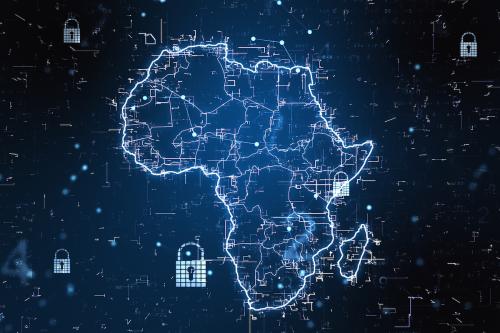This essay is part of “The SDG second half: Ideas for doing things differently.”
Digital technologies can accelerate achievement of the SDGs but only if governments act now to make trusted digital infrastructure universally available. For years digital capabilities have been described as enablers of progress; they are a key reason seven indicators across four SDGs relate to digital capabilities. But here at the halfway mark, meeting the SDGs remains elusive. Digital must again be put forward as an important means to fast-track progress.
With 2030 in sight, governments must find pathways to creating foundational digital infrastructure that can be repurposed for a variety of uses—therefore obviating the need to “reinvent the wheel” and massively improve the return on initial investment.
There is reason to be excited about foundational infrastructure designed for multiple uses. India is efficiently extending government services to over 93 percent of its population enrolled in the Aadhaar identity platform. That same tool is used for banks to extend financial services to millions of unbanked families. In the midst of war, the government of Ukraine is using its e-government portal to ensure displaced citizens can access proof of identity, health care records, and much more. The same underlying system is the basis for government agencies to share data to better understand the needs of citizens and identify how best to service those needs. However, the picture of digital infrastructure is not always rosy. These powerful systems are accelerators of intent, whether good or bad. Since the consensus on the SDGs was secured, the world has witnessed a range of harms resulting from digital technologies—in the form of exclusion; data misuse and abuse; and monopolistic tendencies that squash competitive markets.
The goal therefore is to expand digital infrastructure but ensure the public (state) response is strong enough to maximize participation, agency, choice, and trust (PACT). When digital assets are either publicly owned, publicly regulated, or publicly designed through open protocols–digital infrastructure can be realized for the public good. In other words, digital public infrastructure (DPI) is secured.
While the return on investment for foundational digital infrastructure is high, foreign assistance for DPI remains inadequate. The bulk of donor digital investments are in one-off siloed solutions designed for a specific program or activity, undermining the hope of infrastructural investments that can serve many purposes. Moreover, investment in public sector institutions to regulate and oversee the digital economy is woefully low in most countries.
This must change. Donors need to jointly commit to invest over the long term in DPI solutions—and the necessary institutional safeguards around them—that will serve nations and maximize digital participation, agency, choice, and trust in the quest to achieve the SDGs.
This opportunity is not out of reach. As an example, India spent just over $1 per person to deploy its digital identity system. The figure could be lower for others using open code, which allows low-resource states to leverage the talents of coders around the world who contribute to open-source digital infrastructure solutions. More importantly, because DPI is relevant to most SDG goals, meeting the resource gap may not require new funds. Instead, through a strategic approach to digital public infrastructure and the institutional safeguards, funding intended for siloed technology investments could be redirected to underpin widely available digital infrastructure assets for all.





